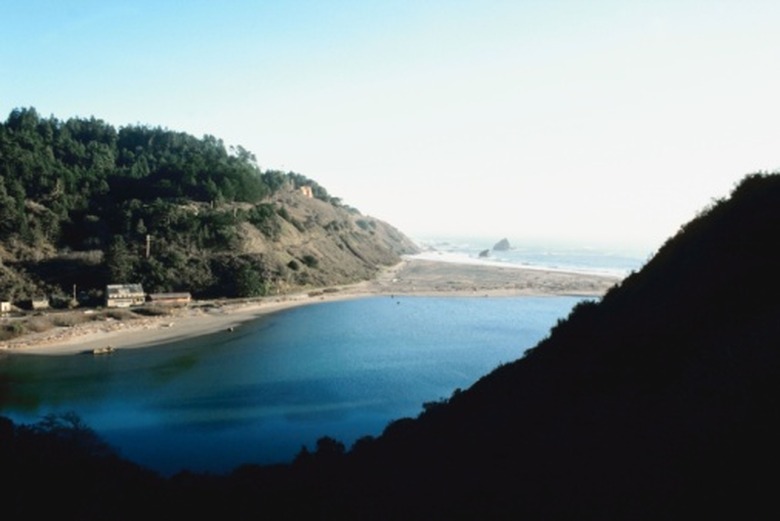Plants In Estuary Biomes
An estuary is a large area where natural bodies of water meet the surface of the land. An estuary consists of three phases, one where the land meets fresh water, another where the fresh water is mixed with salt water, and finally an area farthest from the shore that consists of mostly salt water. This area is protected and maintained by ocean waves, coral reefs and sediments. An estuary biome provides an ideal environment for a variety of plant species, which live year-round on both fresh and salt water and provide food for animals.
Spike Grass
Spike Grass
Spike grass, also known as salt grass and scientifically known as Distichlis spicata, is a short grass species that grows near and around marshland. It is the most common type of grass along the shoreline of estuaries. Capitalizing on bare land, spike grass will grow quickly with little or no nourishment. During maturity, the grass will stand tall and have a single budding flower at its tip. It can withstand salty environments, making it an ideal plant in estuaries, as the salt water distributes salt particles around the marshland and the shore land.
Purple Loosestrife
Purple Loosestrife
Purple loosestrife is a sturdy plant originating in Europe that made its way to North America during the trade and exploration era. The plant consists of a rigid stalk with matted root ends. The position of the roots prevents the plant from growing too tall. At full bloom, the top section of the plant grows purple flower buds. This hardy plant lives in marshland and near the shoreline. As with other estuary biome plants, the purple loosestrife can live in harsh environments and can easily colonize to the point that it will kill off other plants within its proximity.
Smooth Cordgrass
Smooth Cordgrass
Smooth cordgrass is a thin, smooth grass species that lives in estuaries within North America. It is most commonly found in the region where the water meets the shoreline. At high tide, it can be completely submerged in water. The smooth cordgrass can grow to be 6 ft. tall. The height of the plant is determined by its location within the estuary biome, with the tallest growing nearest to the water and the shortest growing closest to the land.
Sea Lavender
Sea Lavender
Also known as Limonium nashii, sea lavender grows during the summer months and is at full bloom in August. The plant grows to be about 12 inches and consists of small oval-shaped leaves. These plants are farthest away from the water in estuary biomes. They do not easily colonize, and depend on natural open space to grow. Depending on the space available, sea lavender can grow in groups or as single plants throughout the estuary biome.
References
- "The Estuarine Ecosystem: Ecology, Threats, and Management"; Donald Samuel McLusky; 2004
- Environmental Data Center: Spike grass
Cite This Article
MLA
, Alex Said. "Plants In Estuary Biomes" sciencing.com, https://www.sciencing.com/plants-in-estuary-biomes-13427994/. 22 November 2019.
APA
, Alex Said. (2019, November 22). Plants In Estuary Biomes. sciencing.com. Retrieved from https://www.sciencing.com/plants-in-estuary-biomes-13427994/
Chicago
, Alex Said. Plants In Estuary Biomes last modified March 24, 2022. https://www.sciencing.com/plants-in-estuary-biomes-13427994/
